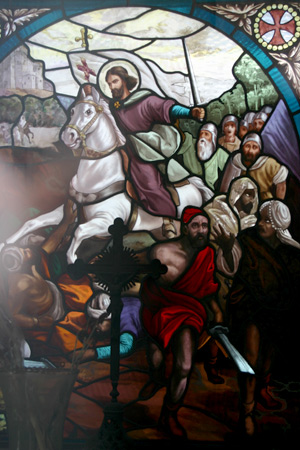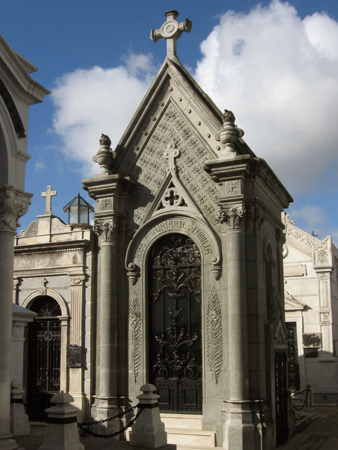
Documenting Recoleta Cemetery in Buenos Aires since 2007
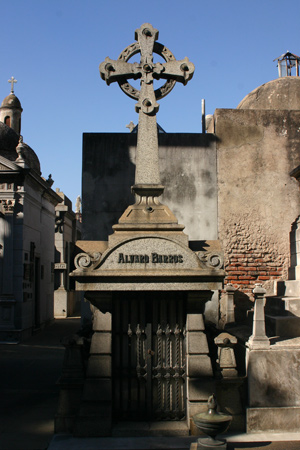
In 1866—several years before the Campaña del Desierto—Álvaro Barros went to command one of the fortified outposts on the frontlines between the indigenous population & what was considered national territory. His new settlement founded a year later near the fortress became known as Olavarría, established friendly relations with local tribes & began moderate agricultural activity.
Barros left Olavarría when his replacement arrived in 1868 but maintained active in both the military & politics. After Roca pushed the frontlines as far south as the Río Negro, all newly acquired territory in Patagonia needed to be officially incorporated into the central government. Roca named Barros Governor of Patagonia in 1878, & he reported to Roca directly… not to the Ministry of the Interior.
Two years later the final boundary was set between the Province of Buenos Aires & Patagonia at the outlet of the Río Negro. To make the separation clearer, Barros decided to move the regional capital to the area only the southern side of the river. Viedma is now considered the oldest settlement in Patagonia.
As co-founder of the land auction firm Bravo Barros y Cía, Álvaro managed to control real estate development in Patagonia & earned a lot of prestige & power at the same time. The company even auctioned off land in Buenos Aires:
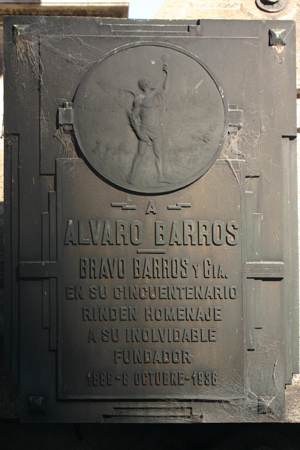
Other relatives of Álvaro helped develop train lines to deliver agricultural goods for export & connect remote regions of the south to the port of Buenos Aires:
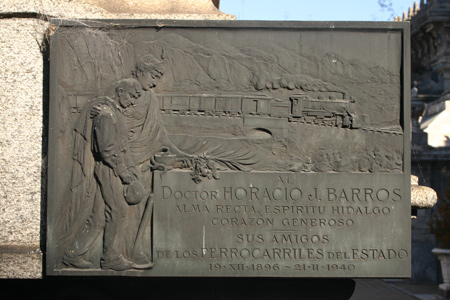
A rather average exterior —by Recoleta standards anyway— hides one of the most artistic depictions of Christ being crucified. Sometimes it pays to peek inside:
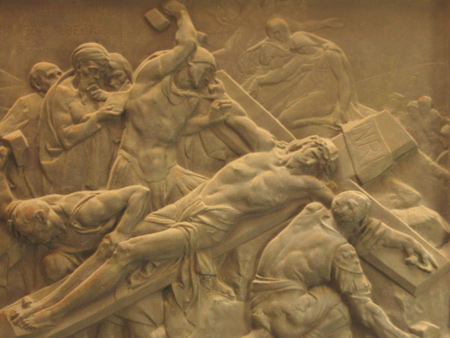
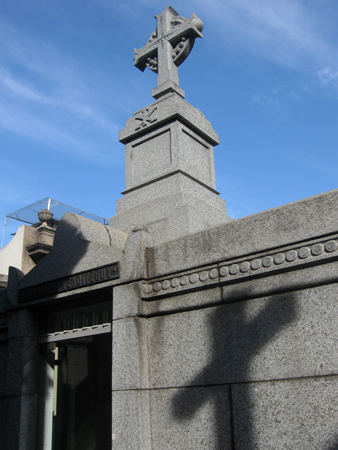
Carlos Menditeguy, sportsman & reknowned playboy, embodied Argentina’s growing role in world affairs in the 1950s. He did it all & did it well, becoming one of the top 6 polo players in the world & often seen in the Argentine Grand Prix. His skill & performance made Maserati take note, & they offered him an opportunity to race on behalf of the company in Europe. Menditeguy’s most significant Formula One race earned him third place while driving a Maserati 250F in 1957. He was notoriously hard to work with & demanding on his equipment but loved the risk involved. Menditeguy passed away in 1973.
Even though the family vault is far from the main walkways of the cemetery, Carlos obviously wanted a permanent stage presence. The northern façade contains a large glass panel providing the visitor an easy look at the elaborate altar & his casket… which will never be moved to underground storage:
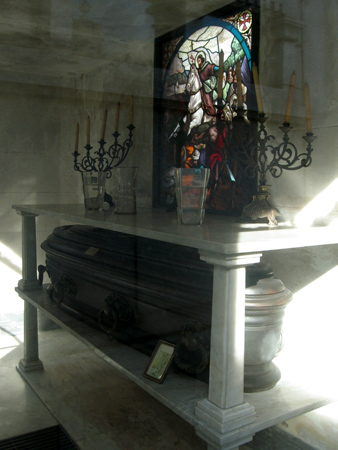
A stained glass panel in the rear of the vault depicts Santiago Matamoros, patron saint of Spain. Not in the least bit politically correct, St. James supposedly helped Spaniards through 800 years of territorial reconquest as they slowly pushed the Moors back to North Africa. Translated as St. James the Moor Slayer, the stained glass depicts him wielding a sword with several Moors being trampled by his horse:
